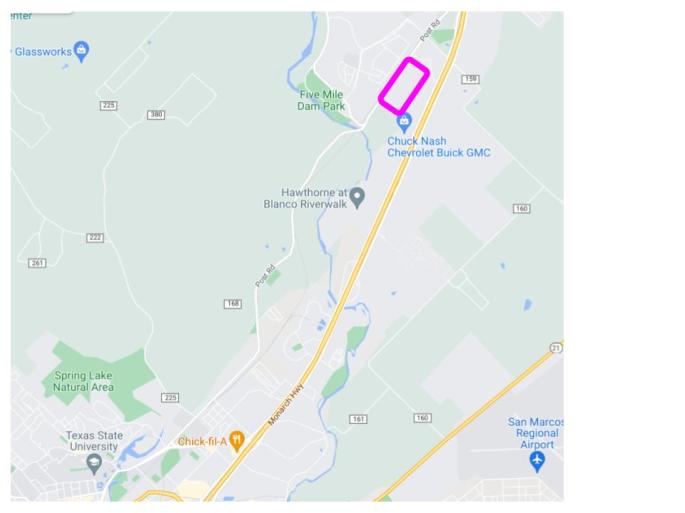Citizen Comment: Citizen Comment is mostly animal shelter experts who are politely asking us to undo the amendments that were added to the Animal Ordinance last meeting, and to trust that the experts have designed the policy to work best when you don’t throw sand in the gears.
One person also speaks up about the curfew ordinance, which ends up being the item of the night that I’m most fired up about.
Item 1: Sidewalk Maintenance and Gap Infill program
There is a quick update from the city – how do they pick which streets to install sidewalks on, what’s the process, how does it work for the landowners, etc. It seems very straightforward to me.
Your neighborhood can petition to get sidewalks added*. Max Baker asks if there is a petition process available to prevent sidewalks from being added to your neighborhood. There hadn’t been, but since all the councilmembers like the idea, there will be, now.
(I hate this idea. I want everyone to want sidewalks. They benefit people who may not live on your street! But that is not the Texas we live in, so I suppose anti-sidewalk petitions are good for the libertarians out there.)
* Although it’s not totally clear at that link where you find the petition. Maybe you have to email.
Item 17: Curfews. I actually feel really strongly about this issue!
Did you know that San Marcos has a curfew for underage residents? Neither did Chief Standridge. Apparently it’s been on the books in its current form since 2009, and it gets re-upped every three years.
There are two parts:
- Curfew overnight: 11 pm – 6 am on school nights, and midnight – 6 am on weekends.
- Curfew during school hours: 9 am – 2:30 pm, Monday through Friday.
Chief Standridge first says that it’s not used very often, and it was impossible to use during Covid when everyone was at home during school hours anyway. So far this school year, they’ve only used it three times.
He specifically talks about “troubled neighborhoods”, neighborhoods with violent crime. Standridge likes curfews because it gives officers an opening to stop and talk to someone who looks too young to be out and about. Otherwise they’re not allowed to just detain people walking down the street, because that is a hallmark of a police state.
I’m so frustrated by the conversation that I want to start with a rant, instead of the council discussion. We’ll get back to the council discussion.
Are curfews best for kids?
Let’s say you’ve got a kid who is jeopardizing their future by missing too much school. Is it in their best interest to entangle them with cops and the legal system? NO. Just no.
Best case scenario, it costs them or their family $150 to go to court and straighten it out. Worst case scenario, they are now tangled up with the juvenile criminal justice system, and they are starting to accumulate prior offenses. This is particularly bad for kids who are likely to get racially profiled.
We lock up an astronomical number of people in the United States. We have a moral obligation to work to keep kids out of the criminal justice system.
And remember, we’re not cruising all neighborhoods on an equal basis, looking to talk to youths! We’re cruising troubled neighborhoods, and stopping young people there. The effect is biased along race and class lines, no matter how much Chief Standridge insists that there’s no racist intent. Maybe there is no racist intent! But in effect, there is bias. Only kids from troubled neighborhoods are getting ensnared under curfew laws.
What about those kids that really are getting up to mischief overnight or during school? Most of the time, you can let the family handle it. The police are not needed to help the kid straighten out.
But other times, kids causing problems are the ones that have big problems. They are in unstable homes. They have mental health issues. They are living with poverty and/or witnessing substance abuse and/or violence and/or manipulation and/or emotional control, etc. Getting these kids ensnared in the legal system just pours fuel on the fire.
What’s the alternative? What would be in the best interests of the kid? Basically, any meaningful, evidence-based intervention. Run it through community services, rather than the cops. Cops are really not trained to handle traumatized kids! Traumatized kids will deliberately try to provoke adults and be disrespectful, and cops are the worst at handling that kind of thing!
Why don’t we do implement more of those interventions that are shown to work? First of all, we do. Notice that there was no one from Community Action or the public schools or other after-school programs there to talk about what actually works against truancy.
If kids are still slipping through, why don’t we do even more of these programs? $$$$$$$$$. Anything that works will be labor-intensive and time-intensive. You have to have programs and you have to take time to build relationships with kids. You know what’s cheap? Letting officers stop kids whenever they want and intervene.
This is absolutely not best for kids. This is cheapest for kids.
Is it best for everyone else? Does it protect the rest of us to keep kids under curfew?
No.
- Do kids get up to mischief? Abso-fucking-lutely. They are absolutely capable of petty theft and vandalism and being a nuisance. But if any of those things are going on, then cops are allowed to stop people who may be involved. If someone calls in that the neighborhood kids keep stealing shit off their porch, the cops are allowed to go talk to the neighborhood kids. No curfew needed.
- Do kids get up to violent crime? Maybe occasionally? But most violent crime is going to be committed by men aged 17-30, who are not affected by curfew. You can address the stray kid with a propensity for violence using the same techniques that you address the 17-30 year olds. No curfew needed.
When there is mischief or criminal activity, there are already mechanisms to intervene.
But more importantly, curfews don’t actually work. The academic studies show zero or minimal improvement when there are curfew laws in place. (What actually works? This chart summarizes the outcomes of a bunch of programs, both good programs that work, and also the dumb, authoritarian ones like Scared Straight that turn out to increase crime. This longer read is really thorough and good on programs that work.)
So how did City Council actually deal with this?
First, Shane Scott makes a motion to deny. Great! I agree.
Max Baker asks several times for data surrounding whether or not curfew is used to just stop teens randomly. What percent of stops do not result in tickets? Chief Standridge says that they don’t track that, and it would be overly cumbersome to do so.
Mark Gleason is a Chief Stan-stan, and so he’s all in. Anything that reduces truancy and violent crime (or pretends to) is good with him. His wife is an educator, and knows that truancy is a major problem. And violent crime in his neighborhood is out of control.
Alyssa asks, “How much of the violent crime is actually committed by minors?”
Chief Standridge doesn’t know this either. He openly says that the point of a curfew is to give officers cover so that they can stop minors and ask them why they’re out and about. I genuinely think he thinks it’s best for kids. (It’s not.)
Fundamentally, if you’re a hammer, you see the world as a nail. If you’re a chief of police, you think that police intervention is good for community members. (It’s not, necessarily.)
Jane Hughson asks about the list of exceptions. For example, you’re allowed to be out after curfew if you’re heading home from work or church. You’re allowed to be out and about on school holidays. Why don’t we call those “exceptions”? Instead we call them “defenses to prosecution”.
The reason is kind of creepy: If we called them exceptions, then officers would not be allowed to stop minors with exceptions. If we call them “defenses to prosecution”, then officers can stop whoever they like and give them a ticket, and the kids can use those exceptions in court to fight the ticket. It means that the cops don’t have to presume innocence. They can presume guilt, and let the kids fight it, in court.
The vote to deny the curfew ordinance:
Deny: Max, Alyssa, and Shane
Do not deny: Jane, Mark, Saul
Jude Prather is absent. It takes 4 votes to win a vote, so the motion to deny fails. So now there is a motion to approve the ordinance, which still needs to pass.
Max Baker asks how much the tickets cost. This is also a big consequence of over-policing poorer neighborhoods! You nickel and dime people to death!
Do you remember how much hand-wringing there was over a tax increase of $24 per year, which goes to help the entire community? The tickets here are set by the judge, with a max of $500. Plus court costs, which run $80-$100.
Max Baker makes a motion to cap the ticket fine at $50. This seems eminently reasonable to me. You’re still running up $150 in costs by being stopped by cops.
The vote:
Cap tickets at $50 max: Jane, Alyssa, Max, Shane, Saul
Fuck those poor people: Mark
Mark believes that punitive punishments are effective. That is a very authoritarian mindset. It drives me up the wall.
Next we go down a real rabbit hole with data. Max Baker wants the police to start recording a lot more data around these curfew stops.
I think asking for data is a waste of time, to be honest. The issue of curfews is a moral issue, and we already know, straight up, that curfews target people based on where they live. The only consequence of asking for data is to throw sand in the gears, because data is cumbersome to acquire. (Furthermore, Max’s question – are you stopping kids in a biased manner? – is not going to be answered by the data Max wants. You’d have to know which kids they just let walk by, without stopping them at all.)
Alyssa reiterates her question about wanting to know what percent of violent crime is caused by minors. This is the right question. And it’s not cumbersome at all to acquire. You’re not asking cops to fill out an extra form throughout their day, you’re asking someone to retrospectively pull a number from a spreadsheet.
Standridge balks at this. Minors records are protected by law!
Alyssa points out that she wants aggregate data, not individual data. (What Alyssa does best on the dais is respond to points like this in a soothing manner. She says, “Data is really powerful! I bet we can figure out a way to get the answer and still protect the kids!” in an upbeat, soothing way. It’s very effective.)
Max goes off on a rant about Mark Gleason being a shill for the police, because they endorsed him, and therefore he’s going to be in favor of this, no matter what!
Max is a little off here – Mark Gleason has a true authoritarian streak. Mark supports curfews because he sincerely loves heavy-handed police tactics, and believes in “good guys” and “bad guys”, and believes that the police can tell the difference. The police endorsed Mark, but Mark was always already in their corner.
Mark Gleason takes offense, and goes on a rant about the violent crime in his neighborhood. (He lives in Blanco Gardens.) He’s sick of it! He hears gunshots all the time, and kids are stealing car parts and messing up people’s yards.
Clearly Mark thinks that allowing cops to stop and talk to anyone looking young on the streets will have an effect on violent crime. That’s a very authoritarian take, and ends up hurting people who “look” like criminals.
The vote: Should cops have to collect and present a lot more data?
Yes: Max, Shane, Alyssa, Saul
No: Jane and Mark.
Finally, the main motion on curfews:
The vote: Should we have curfews?
Yes: Jane, Mark, Saul
No: Max, Shane, Alyssa
So this fails too!! What does this mean? It means that when they discuss curfews at the next meeting, it will still be the first reading. However, Max will be gone and Matthew Mendoza and Jude Prather will be back. So I’m guessing this will pass.






